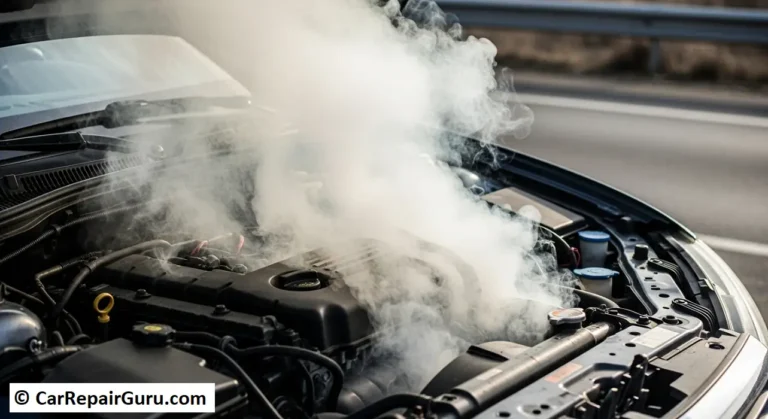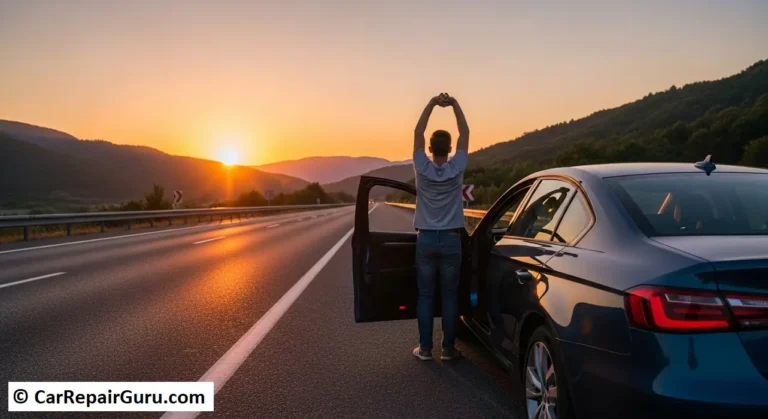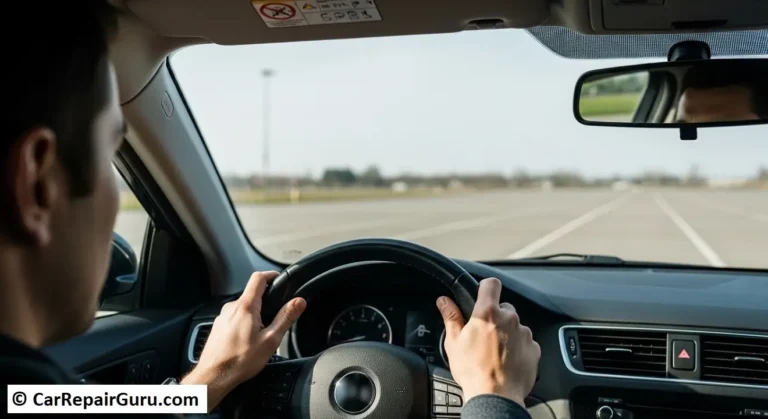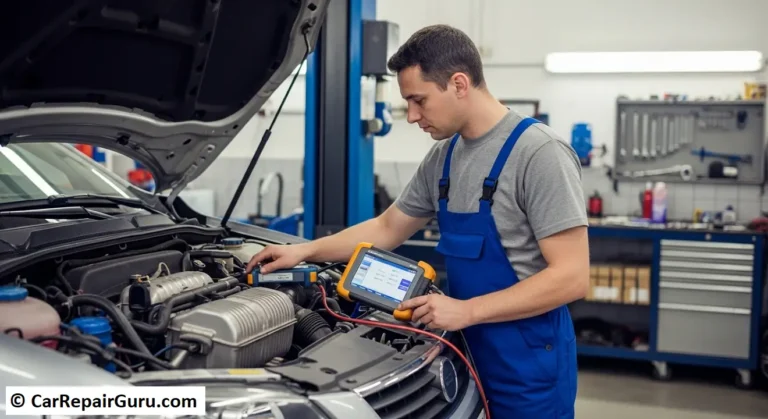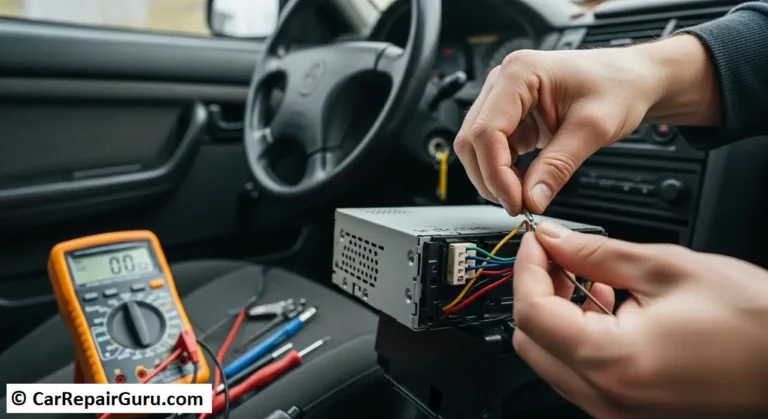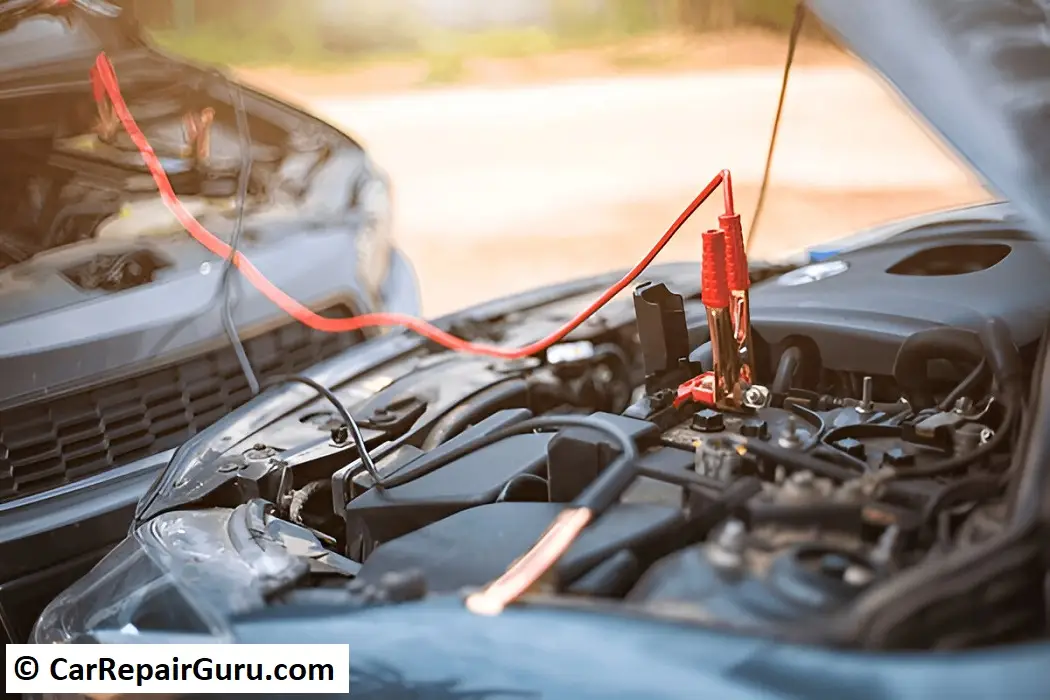
Jumpstarting a car safely is an essential skill every driver should know. Whether you’re stuck in a parking lot or stranded on a quiet road, knowing how to revive a dead battery can save you time, stress, and money. A dead battery is one of the most common car troubles, often caused by leaving headlights or interior lights on overnight, cold weather, or an aging battery.
In this guide, we’ll walk you through how to jumpstart a car safely, covering everything from essential safety precautions to a step-by-step process. You’ll also find tips for troubleshooting and maintaining your battery to prevent future issues. By the end of this article, you’ll feel confident tackling this task and getting back on the road quickly.
Before diving in, ensure you have the necessary tools: jumper cables and access to a functioning car battery or a portable jump starter. Safety always comes first, so let’s start with precautions to keep you and your vehicle safe.
Safety Precautions Before Jumpstarting a Car
Before jumpstarting a car, taking safety precautions is critical to protect yourself and your vehicle from potential hazards. Follow these steps carefully to ensure a smooth and safe process.
1. Inspect Both Batteries for Damage or Leaks
Begin by checking both car batteries for any signs of physical damage, such as cracks, corrosion, or fluid leaks. A damaged or leaking battery can release harmful chemicals and poses a risk of explosion during jumpstarting. If you notice these issues, do not proceed. Instead, seek professional assistance.
2. Ensure Both Cars Are Turned Off and Keys Removed from the Ignition
Turn off both vehicles completely, removing the keys from the ignition. This step is crucial to prevent electrical surges or accidental sparks while connecting the jumper cables.
3. Avoid Loose Clothing and Wear Protective Gear
Loose clothing, jewelry, or dangling items can get caught in engine components, leading to injuries. Before starting, remove any such items and wear protective gloves and safety glasses to shield yourself from sparks or battery acid.
4. Park Cars in a Ventilated and Safe Area
Ensure the vehicles are parked in a well-ventilated area, preferably outdoors, to prevent the buildup of fumes. Position the cars close enough for the jumper cables to reach both batteries without the vehicles touching each other. Apply the parking brake on both cars to avoid unintended movement.
By following these precautions, you reduce the risk of accidents and ensure a safer jumpstarting process. Next, we’ll guide you through the step-by-step instructions on how to jumpstart a car safely to get you back on the road quickly.
Step-by-Step Guide on How to Jumpstart a Car Safely
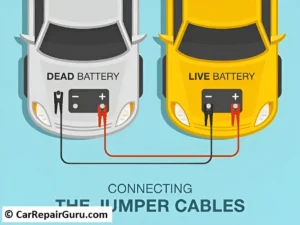
Jumpstarting a car might seem intimidating, but by following these steps, you can safely revive a dead battery and get your car running again. Let’s break the process into manageable steps.
1. Park the Cars Properly
The first step is to position the vehicles correctly for a safe and effective jumpstart:
- Position the Vehicles: Park the car with the working battery close enough to the car with the dead battery for the jumper cables to reach. However, ensure the two vehicles do not touch to prevent accidental electrical transfer.
- Ensure Accessibility: Open the hoods of both cars and locate the batteries. If the batteries are covered or hidden, consult the vehicle manuals for guidance. Identify the positive (red) and negative (black) terminals on both batteries.
- Select a Grounding Point: Locate an unpainted metal surface (like a bolt or engine bracket) on the car with the dead battery. This will serve as the grounding point for the black cable, reducing the risk of sparks near the battery.
2. Connect the Jumper Cables in the Correct Order
Properly connecting the jumper cables is crucial to avoid damaging the batteries or electrical systems:
- Attach the Red Clamp to the Positive Terminal of the Dead Battery: Find the “+” or “POS” marking on the dead battery and secure the red clamp to the terminal.
- Connect the Red Clamp to the Positive Terminal of the Good Battery: Attach the other end of the red cable to the positive terminal of the working battery.
- Secure the Black Clamp to the Negative Terminal of the Good Battery: Connect the black clamp to the “–” or “NEG” terminal of the functioning battery.
- Attach the Black Clamp to the Grounding Point of the Dead Car: Secure the other end of the black cable to the grounding point you identified earlier. Avoid connecting this clamp directly to the dead battery to prevent sparks.
3. Start the Cars
Now that the cables are connected, it’s time to start the cars in sequence:
- Start the Car with the Good Battery: Turn on the engine of the working car and let it idle for 2–5 minutes. This allows power to flow into the dead battery.
- Start the Car with the Dead Battery: Attempt to start the car with the dead battery. If it doesn’t start, wait another minute and try again. Avoid cranking the engine for more than 10 seconds at a time to prevent damage.
Once the car starts, leave both engines running for a few minutes to stabilize the charge.
4. Disconnect the Cables Safely
After the car with the dead battery is running, carefully remove the jumper cables in reverse order:
- Remove the Black Clamp from the Grounding Point of the Dead Car: Detach the black clamp connected to the grounding point first.
- Detach the Black Clamp from the Negative Terminal of the Good Battery: Remove the other end of the black cable.
- Disconnect the Red Clamp from the Positive Terminal of the Good Battery: Unclip the red clamp from the working car’s battery.
- Finally, Remove the Red Clamp from the Positive Terminal of the Dead Battery: Detach the last cable, ensuring it doesn’t touch any other metal parts.
Additional Tips for Success
- Let the Car Run: After successfully jumpstarting, leave the car with the revived battery running for at least 30 minutes to recharge the battery.
- Double-Check the Cable Order: Always connect and disconnect the cables in the correct sequence to prevent damage to the car’s electrical system.
- Handle Cables Carefully: Avoid letting the clamps touch each other or any metal surface while connected to prevent sparks.
By following these detailed steps, you can confidently handle how to jumpstart a car safely in most situations. If the car doesn’t start after multiple attempts, it may indicate a more significant issue, such as a failing alternator or a completely drained battery, requiring professional attention.
Troubleshooting Common Issues
Even when you follow the jumpstarting steps correctly, there may be instances where the car still doesn’t start. Here’s how to troubleshoot the most common issues and determine when to seek professional help.
1. Steps if the Car Doesn’t Start After Jumpstarting
If the car doesn’t respond after the initial attempt, don’t panic. Follow these steps to identify and resolve potential issues:
- Check the Cable Connections: Ensure the jumper cables are firmly attached to the correct terminals. A loose or incorrect connection can prevent the power transfer needed to jumpstart the battery.
- Allow More Time: Keep the donor car running for another 5–10 minutes to provide more charge to the dead battery. Sometimes heavily drained batteries need additional time to absorb enough power.
- Inspect the Grounding Point: Ensure the black clamp on the dead car is securely connected to an unpainted metal surface, as a poor grounding point can disrupt the process.
If these steps don’t work, it’s likely the issue lies beyond the battery.
2. Signs of a Failing Battery or Alternator
When a jumpstart fails, it may indicate a deeper problem with the car’s electrical system:
- Failing Battery: If the car starts but struggles to stay running, the battery might not be holding a charge due to age or internal damage. Batteries typically last 3–5 years; older ones may need replacement.
- Faulty Alternator: If the battery is charged but the car dies shortly after starting, the alternator might not be providing the electricity needed to keep the engine running. This issue requires immediate attention.
- Other Electrical Issues: Blown fuses, corroded cables, or a faulty starter can also prevent successful jumpstarting.
3. When to Call a Mechanic or Replace the Battery
If troubleshooting doesn’t resolve the issue, it’s time to call a professional or consider replacing the battery:
- Seek Professional Help If:
- The battery shows visible damage, like swelling or leaks.
- The car doesn’t start even after trying multiple solutions.
- There are strange noises, such as clicking, which could indicate a failing starter.
- Replace the Battery If:
- It’s older than 5 years.
- It repeatedly fails to hold a charge even after jumpstarts.
Understanding these troubleshooting steps ensures you’re prepared for unexpected car troubles. If the issue persists, a certified mechanic can diagnose and resolve the problem efficiently.
Tips for Long-Term Battery Maintenance
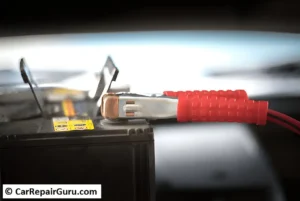
Proper battery maintenance is essential for avoiding unexpected breakdowns and prolonging the lifespan of your car battery. Incorporate these tips into your regular vehicle care routine:
1. Keep Battery Terminals Clean
Corrosion on battery terminals can disrupt the electrical connection and reduce your battery’s efficiency. To prevent this:
- Inspect the terminals regularly for signs of corrosion (white or greenish deposits).
- Clean them using a mixture of baking soda and water with a wire brush, ensuring the battery is disconnected beforehand.
- Apply a thin layer of petroleum jelly or terminal protectant spray to prevent future corrosion.
2. Use a Portable Car Jump Starter as a Backup
A portable car jump starter is a convenient and reliable tool to have in case of emergencies:
- Unlike jumper cables, a jump starter doesn’t require another vehicle, making it ideal for remote locations.
- Regularly check and charge your portable jump starter to ensure it’s ready when needed.
3. Avoid Leaving Lights or Electronics On Unnecessarily
One of the most common causes of a drained battery is leaving lights or electronic devices on after the engine is off:
- Always double-check that headlights, interior lights, and other electronics are turned off before exiting the car.
- Disconnect unnecessary devices, like phone chargers, when the car isn’t running, as these can draw power from the battery over time.
Additional Tips
- Drive your car regularly to maintain the battery’s charge, especially if you primarily take short trips.
- Invest in a trickle charger for long-term storage to keep the battery charged without overloading it.
By adopting these habits, you can ensure your car battery remains in good condition, saving you from inconvenient and costly breakdowns. Regular care and attention will maximize your battery’s lifespan and efficiency.
Conclusion
Knowing how to jumpstart a car safely is an invaluable skill that can save you from stressful situations and get you back on the road quickly. By understanding the proper steps, such as positioning vehicles correctly, connecting jumper cables in the right order, and prioritizing safety precautions, you can handle a dead battery with confidence.
However, prevention is always better than cure. Regular maintenance, like cleaning battery terminals and monitoring its charge, can reduce the chances of encountering a dead battery. Simple habits, such as turning off lights and unplugging electronics, can also help maintain battery health.
When faced with persistent issues despite troubleshooting, don’t hesitate to seek professional help. A certified mechanic can diagnose and address underlying problems, like a failing alternator or worn-out battery, ensuring your car operates smoothly.
By staying prepared and prioritizing maintenance, you can enjoy a reliable and hassle-free driving experience while avoiding emergencies. For further assistance or resources, consult your vehicle’s manual or trusted automotive experts.
FAQ Section
Q1: Can I jumpstart a hybrid or electric car?
No, hybrids and electric vehicles have different battery systems that are not designed for traditional jumpstarting. Attempting to jumpstart an EV could damage its components. Always refer to your vehicle’s manual or contact a professional for assistance.
Q2: What happens if I connect the cables in the wrong order?
Connecting the jumper cables incorrectly can cause sparks, battery damage, or even an explosion. It may also harm your vehicle’s electrical system. Always double-check the steps before proceeding to avoid costly or dangerous mistakes.
Q3: How long should I leave my car running after a successful jump-start?
After jumpstarting, keep the car running for at least 30 minutes to allow the alternator to recharge the battery. If possible, drive the vehicle rather than letting it idle, as this helps the battery regain power more efficiently.
Q4: Is it safe to jumpstart a frozen battery?
No, jumpstarting a frozen battery is dangerous. A frozen battery can crack or explode when electrical current flows through it. If you suspect your battery is frozen, allow it to thaw in a warm place and have it inspected by a professional before attempting to restart your car.
Q5: What is the grounding point for a car battery?
The grounding point is an unpainted metal part of the engine bay, such as a bolt or bracket, that provides a safe path for the electrical current. Connecting the black cable to the grounding point instead of the battery itself helps reduce the risk of sparks and electrical hazards.
